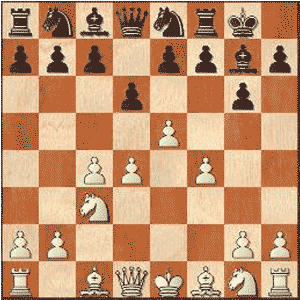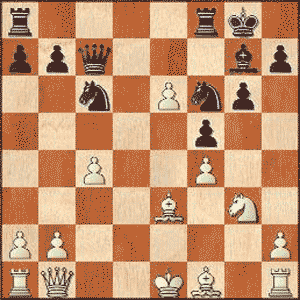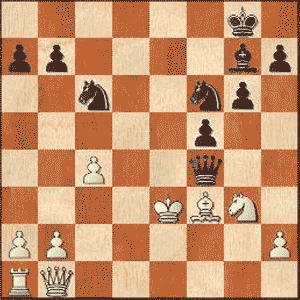| Back to Back Issues Page |
 |
|
LCB, Issue #111 --, Play the King's Indian as Black September 01, 2024 |
Play the King's Indian as BlackLapoc Chess Board, Issue #111 -- GOTM #81 learn and play online chess The King's Indian Defense represents a completely new scheme in dealing with 1.d4. Unlike the Semi-Slav there is no attempt made to prevent 2.e4. You are quite happy to allow White to build a big center. You challenge for control of e4 in the QGD, the Slav and Semi-Slav Defenses but not here. Now instead of grinding your way towards equality you will fight violently for the initiative. Starting with the moves 1.d4 Nf6 2.c4 g6, you will do this by targeting White's big center. You will play to get your e and f-pawns rolling towards White's Kingside in a winner takes all strategy. These along with your powerful dark square Bishop are some of your main weapons in the opening. White has many continuations on move 3. The main one is 3.Nc3 leading to the Classical KID. Our King's Indian Defense game was played in Leipzig, Germany in 1960. Rene Martner had the White pieces and Bobby Fischer launched the King's Indian with Black. Play the King's Indian as BlackMartner, Rene Letelier - Fischer, Robert J [E70]GotM #80 Margate, 1937 [Connaughton, Ken] 1.d4 Queen's Pawn Game 1...Nf6 2.c4 g6 King's Indian Defense 3.Nc3 Bg7 4.e4 White's idea is to build a big imposing center. 4...0-0 Fischer invites e5. Afterwards the game will revolve around a struggle in which White will try to achieve dominance through his big center. Black of course will strive to prevent being squeezed into submission by destroying White's proud center. (4...d6 is one way to deter the e5 advance.) 5.e5 Ne8 (5...Nh5? 6.g4 and the Knight would be lost.) 6.f4 d6
Now that White has pushed forward his big center, Black activates his plan to demolish it. 7.Be3 c5 The assault continues. 8.dxc5 Nc6 (8...dxc5? 9.Qxd8+-) 9.cxd6 exd6 10.Ne4 Bf5 11.Ng3 Be6 12.Nf3 Qc7 Prepping the final assault on the ruins of the once fine center. 13.Qb1 White accepts the loss of his center and contents himself with plans to push the f-pawn. He should spare a thought for his King that yet languishes in the center. Black has fallen quite a ways behind in development. 13...dxe5 14.f5
14...e4 (14...gxf5 15.Nxf5 Bf6 16.Qe4=) 15.fxe6 exf3 16.gxf3 f5 (16...fxe6 17.Bh3 Rxf3 18.Qe4 Ne5-+)
Black has nicer pieces, a safer King and a lead in development. He is reckoning that the passed pawn on e6 is a weakling with no chance of Queening. Sooner or later it will fall into his grasp. 18.Be2 Rfe8 19.Kf2 Rxe6 20.Re1 Rae8 21.Bf3 Black's pieces are perfectly aligned and now it is time for the tactical blow that will make use of his positional superiority. 21...Rxe3! 22.Rxe3 Rxe3 23.Kxe3 Qxf4+!!
White resigns immediately in the face of Black's sacrifice. (23...Qxf4+ 24.Kxf4?? (24.Kd3 Qxf3+-+; 24.Ke2 Nd4+ 25.Kf2 Qxf3+-+; 24.Kf2 Ng4+ 25.Kg2 Ne3+ 26.Kf2 Nd4 27.Qh1 Ng4+ 28.Kf1 Nxf3-+) 24...Bh6#) 0-1 Martner, Rene Letelier - Fischer, Robert J [E70] P.S. If you do not have html based email software and you're using a text only system, you may find that the links are only partially highlighted and may not work. If this is the case, simply copy and paste the entire link into the browser and hit Enter. That should get you where you want to go. Comments, ideas, feedback? I'd be stoked to hear from you. Get in touch See you next month. Ken 
|
| Back to Back Issues Page |



